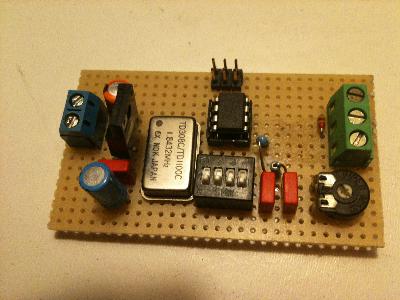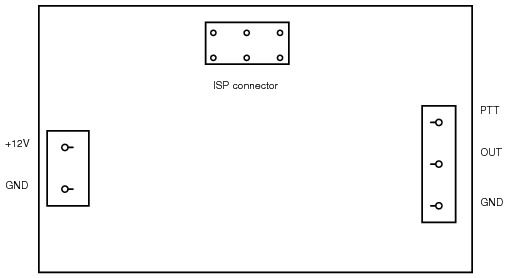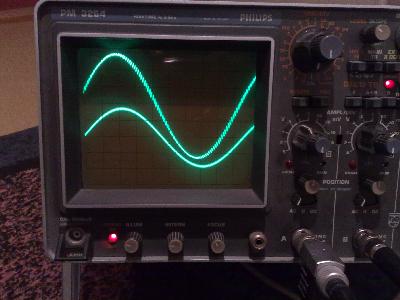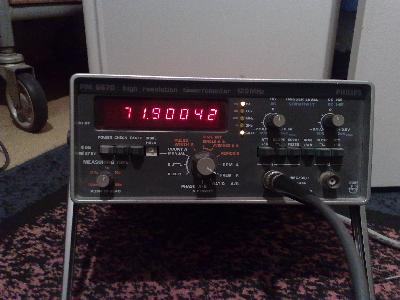

CTCSS encoder
Connections

|

|
|
CTCSS encoder |
Connections |
![[ctcss.png]](ctcss.png)
| S2 | S3 | Output |
| on | on | 71.9 Hz |
| on | off | 77.0 Hz |
| off | on | 82.5 Hz |
| off | off | 88.5 Hz |
| S1 | S2 | S3 | Output | S1 | S2 | S3 | Output | |
| on | on | on | 71.9 Hz | off | on | on | 67.0 Hz | |
| on | on | off | 77.0 Hz | off | on | off | 250.0 | |
| on | off | on | 82.5 Hz | off | off | on | 500.0 Hz | |
| on | off | off | 88.5 Hz | off | off | off | 1000.0 Hz |

|

|
|
Upper trace: signal after 1st RC section Lower trace: signal after 2nd RC section Photo: PE1GGX |
Specification: 71.9 Hz +/- 0.4% ;-) Photo: PE1GGX |